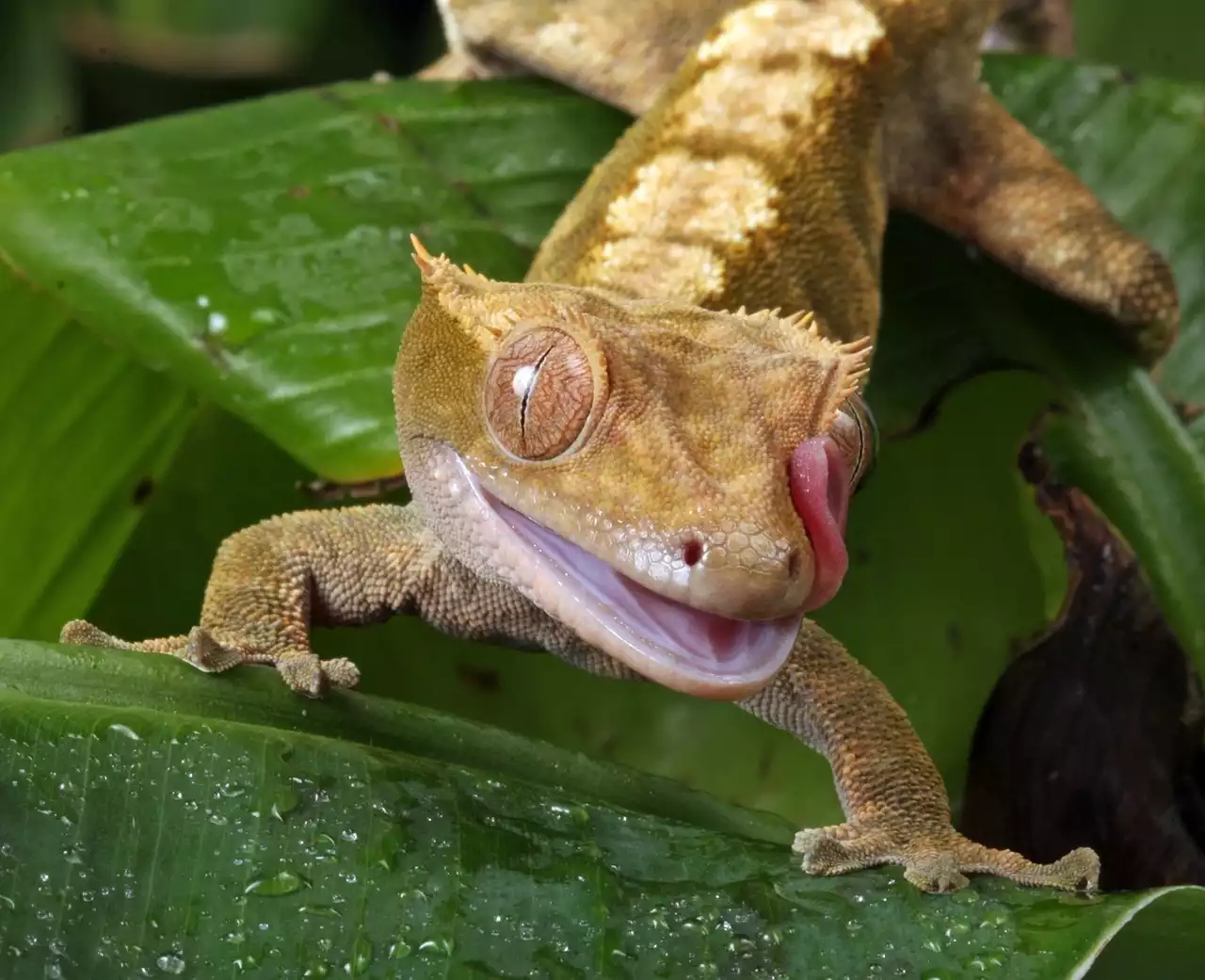In the last decade, reptile keeping has increased in popularity. From snakes and lizards to turtles and tortoises, there is a wide range of pet reptiles available. If you’re thinking about adding a gecko to your family, here is everything you need to know about the crested gecko as a pet. Crested geckos are one of the most popular pet lizards out there due to their unique appearance, small size, and ease of care. In this article, we will cover everything from housing requirements to feeding schedules so you can decide if a crested gecko is right for you!
What is a Crested Gecko?
A crested gecko is a species of gecko native to parts of Asia. They are small lizards, usually no more than 5 inches long, and are often dark green, black, or brown in color. Crested geckos have very large eyes and a very unique “crest” on their heads. Crested geckos are nocturnal, which means they are most active at night. They are insectivores, meaning they eat mainly bugs, but they also may eat certain flowers and fruits. Crested geckos make great pets for people who have the space and time to care for a reptile. Their small size and ease of care make them a great choice for beginners, but even experienced reptile owners enjoy their company!
Where do Crested Geckos Come From?
Crested geckos are native to parts of Asia and are usually found in trees at high elevations. They live in warm areas that receive plenty of sunlight and have humidity levels above 50%. While they can be found in trees, most crested geckos in the pet trade are kept on floor-level condos that are easy for people to clean and maintain. Crested geckos are easy to care for in captivity, but they are not always easy to care for in the wild. In their natural habitat, they are used to warm temperatures and high humidity. Captive crested geckos are often kept in warm environments but at much lower levels of humidity, which can be very stressful. Wild crested geckos also have plenty of access to insects, while captive geckos have very limited access to food sources.
Crested Gecko Morphs Explained!
Housing a Crested Gecko
When thinking about housing a crested gecko, you need to keep in mind that they are tree dwellers. This means they usually prefer slightly higher humidity than many other lizards. A crested gecko also likes to have plenty of places to climb and perch, since they are a naturally arboreal species. A cage for one crested gecko should have a minimum length of 24 inches and a width of 12 inches. The height of the tank should be at least 12 inches. If you have multiple geckos, you will need to double the space! The substrate (flooring) in your crested gecko’s cage should be easy to clean and extremely absorbent in order to keep the humidity high. Newspaper, paper towels, or tile are all good options.
Feeding Schedule for a Crested Gecko
Crested geckos are often fed a variety of live insects, crickets, mealworms, wax worms, and super worms. These can be purchased at your local pet store. If you have multiple geckos, you can feed them together. Crested geckos are omnivores, so they may also be fed certain fruits and vegetables, such as carrots and broccoli. Crested geckos have very quick digestive systems, so the food must be eaten immediately after it’s offered. This can be a problem if your gecko is not active at night when you are more likely to feed it. In this case, you can feed your gecko during the day, but you should make sure they are not eating too much.
Health Care for Your Crested Gecko
Crested geckos are relatively easy to care for. They don’t require frequent cleaning of their tank and don’t need any special lights. Crested geckos are prone to certain diseases, such as metabolic bone disease and parasites. These are often spread in pet stores, so it’s important to buy a gecko that was raised in a clean environment and has been properly treated for parasites. Crested geckos may also get sick if they eat too many insects. If your gecko seems lethargic, stops eating, and has trouble climbing, it may have an intestinal impaction. In this case, you should take your gecko to the vet immediately!
Breeding and Development of Eggs for a Crested Gecko
Crested geckos are usually kept as pets by people who are not planning to breed them. This is because they are very difficult to sex with any degree of certainty. Crested geckos reach sexual maturity at one year old. After two years, they should be ready to breed almost any month of the year. Crested geckos are oviparous, which means they lay eggs. The female will lay two to five eggs per clutch and should be kept at a warm temperature of 88-100 degrees Fahrenheit. After one month, the eggs should be removed from the cage, as the female may eat them while they are incubating. The eggs can be incubated in any number of ways. Paper towel rolls, shoeboxes, or plastic containers can all be used as incubators.


 Perfect Valentines Day Gifts for Wife, Husband, Women, and Men!
Perfect Valentines Day Gifts for Wife, Husband, Women, and Men!
 What Sets British Fashion Apart From the Rest?
What Sets British Fashion Apart From the Rest?
 What are the most Traditional French Dishes?
What are the most Traditional French Dishes? The Social and Intelligent Iguana
The Social and Intelligent Iguana The Pink Tongue Skink as a Pet
The Pink Tongue Skink as a Pet Keeping a Leopard Gecko at Home
Keeping a Leopard Gecko at Home How to Care for a Bearded Dragon
How to Care for a Bearded Dragon